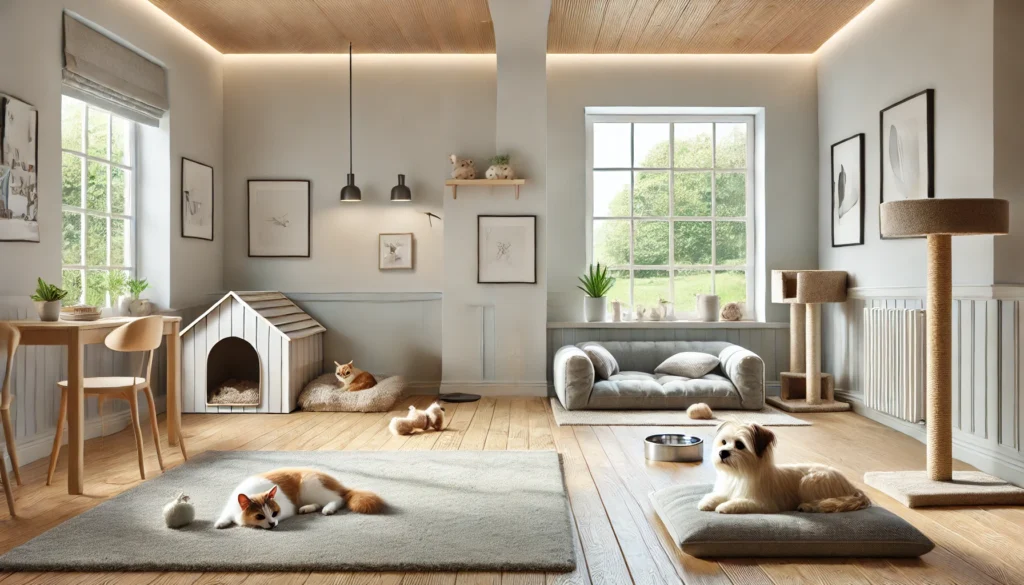Having a pet indoors is a wonderful experience, but it also comes with responsibility. Dogs and cats need more than just food and water—they crave routine, stimulation, and affection. Small, daily habits can go a long way in creating a positive environment where your pet feels safe, relaxed, and truly at home.
Here’s a practical guide to daily habits that will help your dog or cat live a calm and happy indoor life.
Establish a Consistent Routine
Animals, especially dogs and cats, thrive on routine. A predictable schedule helps them feel secure and reduces anxiety.
- Feed them at the same times each day.
- Take dogs for bathroom breaks regularly.
- Clean the litter box daily for cats.
- Schedule quiet nap times and active play times.
Consistency makes your pet more confident and comfortable in their environment.
Start Each Day With a Calm Greeting
How you begin the day sets the tone for your pet. Take a few minutes each morning to greet your dog or cat warmly.
- For dogs: gentle petting, a walk, or a play session.
- For cats: soft talk, stroking their head, or offering a treat.
This small ritual builds trust and reassures your pet that they are safe and loved.
Set Aside Time for Daily Play
Even 15–30 minutes of play per day can make a huge difference in your pet’s well-being.
For Dogs:
- Tug-of-war
- Fetch (even indoors down a hallway)
- Hide-and-seek with treats
For Cats:
- Wand toys or feather teasers
- Laser pointer sessions (end with a physical toy so they feel successful)
- Chase-the-ball games
Play is not just physical—it’s mental too. It helps release energy and reduce stress.
Create Calm Zones in Your Home
Every pet needs a quiet place to retreat when life gets noisy or overwhelming.
- A cozy dog bed in a low-traffic area.
- A quiet room or elevated perch for a cat.
- Avoid placing their rest areas near noisy appliances or busy areas.
Let your pet have this space uninterrupted, especially during the day when they nap or at night.
Keep Background Noise Low
Noise sensitivity varies by animal, but most dogs and cats appreciate a calm sound environment.
- Keep TV and music at moderate volumes.
- Avoid loud slamming doors or shouting.
- Consider calming background music or white noise during stressful times (like fireworks or storms).
Noise control helps prevent skittish or nervous behavior.
Provide Opportunities for Scent Exploration
Scent is how dogs and cats explore the world. Even indoors, you can provide olfactory stimulation:
- For dogs: scent games like hiding treats or toys in towels or under boxes.
- For cats: safe herbs like catnip or silvervine.
- Rotate smells by using different materials (cardboard, cloth) in their environment.
This taps into their natural instincts and keeps them mentally engaged.
Encourage Natural Behaviors
Pets feel more relaxed when they’re allowed to express their instincts safely.
- Let dogs chew: Offer safe chew toys or bones.
- Let cats scratch: Provide scratching posts in strategic spots.
- Give both pets vertical and horizontal exploration options—like stairs, furniture, or small obstacles.
Don’t punish natural behavior. Instead, guide it to appropriate outlets.
Offer Affection on Their Terms
Some pets love cuddling; others prefer space. Pay attention to what your pet enjoys.
- Let cats come to you—don’t chase or pick them up too often.
- Pet dogs where they like it (often behind the ears or on the chest).
- Avoid overwhelming them with too much attention.
Respect builds stronger bonds and reduces anxiety over time.
Keep Their Environment Clean and Fresh
A tidy home helps your pet feel calm and healthy.
- Clean bedding weekly.
- Sweep or vacuum fur and dander regularly.
- Wash food and water bowls daily.
- Remove old toys or worn-out items.
A fresh environment signals safety and care, especially for pets that are sensitive to smells or clutter.
Practice Calm Energy Yourself
Pets feed off your energy. If you’re anxious, loud, or inconsistent, they’ll pick up on it.
- Speak in a soothing voice.
- Avoid sudden movements or yelling.
- Take breaks to connect with your pet, especially after stressful moments.
Your mood can directly influence your pet’s emotional state—make calm a habit.
End the Day With Reassurance
Just like your morning routine, an evening ritual can ease your pet into sleep.
- A short walk before bedtime for dogs.
- Brushing or soft petting for cats.
- Reassure them with a calm voice, then let them settle in their sleep space.
These peaceful endings reduce restlessness and prepare them for a good night.
A Happy Indoor Life Is Built on Simple Habits
You don’t need elaborate routines or expensive gadgets to keep your pet happy indoors. Instead, focus on the little things: consistency, affection, cleanliness, and stimulation.
Your daily habits are the foundation of your pet’s emotional and physical well-being. With just a few mindful practices, your home becomes a haven of calm for the ones who bring you unconditional love every day.






